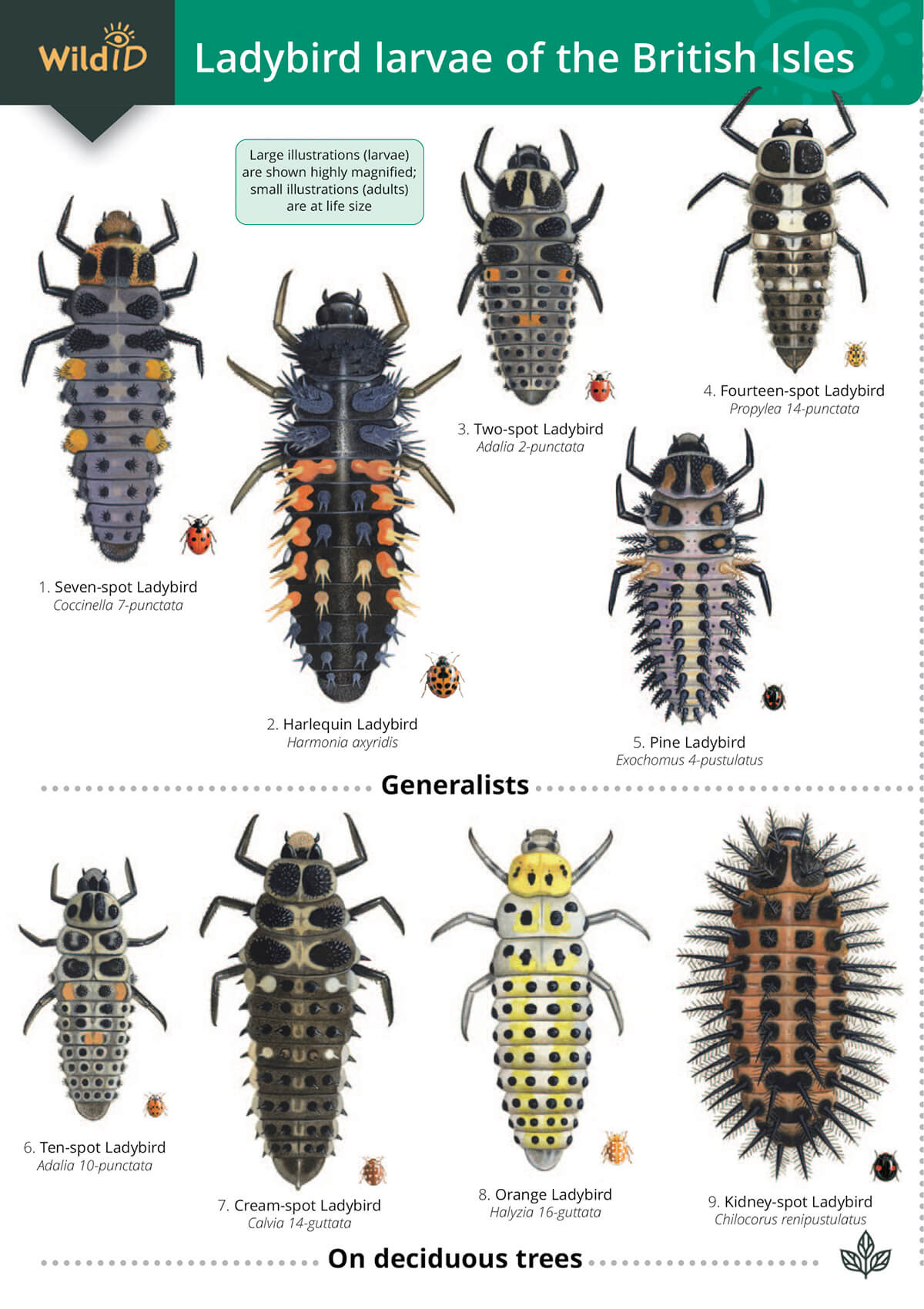Meadow in My Garden
Ladybird Larvae
Ladybird Larvae
Couldn't load pickup availability
Splashproof 8-panel fold-out field guide
Can be wiped clean
Robust when working outdoors
Rucksack sized - 24.5cm x 17.5cm
Ladybird larvae are easy to find in summer in gardens and local green spaces, but they look very different to adult ladybirds.
The FSC Ladybird larvae guide features the larvae and pupae of 26 species in Britain and Ireland. Beautiful colour paintings by Chris Shields show the key colours and patterns to look out. Illustrations are highly magnified, but the accompanying thumbnail illustrations show actual life size.
The reverse side of the guide includes a ladybird identification table. This table covers the important body features, habitat, distribution, status and overwintering site for each species. There are also concise descriptions of the anatomy, life-cycle and diet of ladybirds.
This guide also includes photographs of the pupae of 12 common species. Although pupae can be tricky to identify, they are largely immobile and attached to either a leaf or some other substrate. Many structural transformations take place inside the pupal case, as the ladybird develops into its adult form inside the pupal case.
Ladybirds are insects within the order Coleoptera (beetles). They have their own family (Coccinellidae) within the beetle order, with 47 species resident in the British Isles. The 26 larger coccinellid species are recognisable as ladybirds. Like all beetles, butterflies, moths and flies, ladybirds undergo complete metamorphosis from egg to larva to pupa to adult.
The FSC Ladybird larvae guide was produced in partnership with the UK Ladybird Survey








